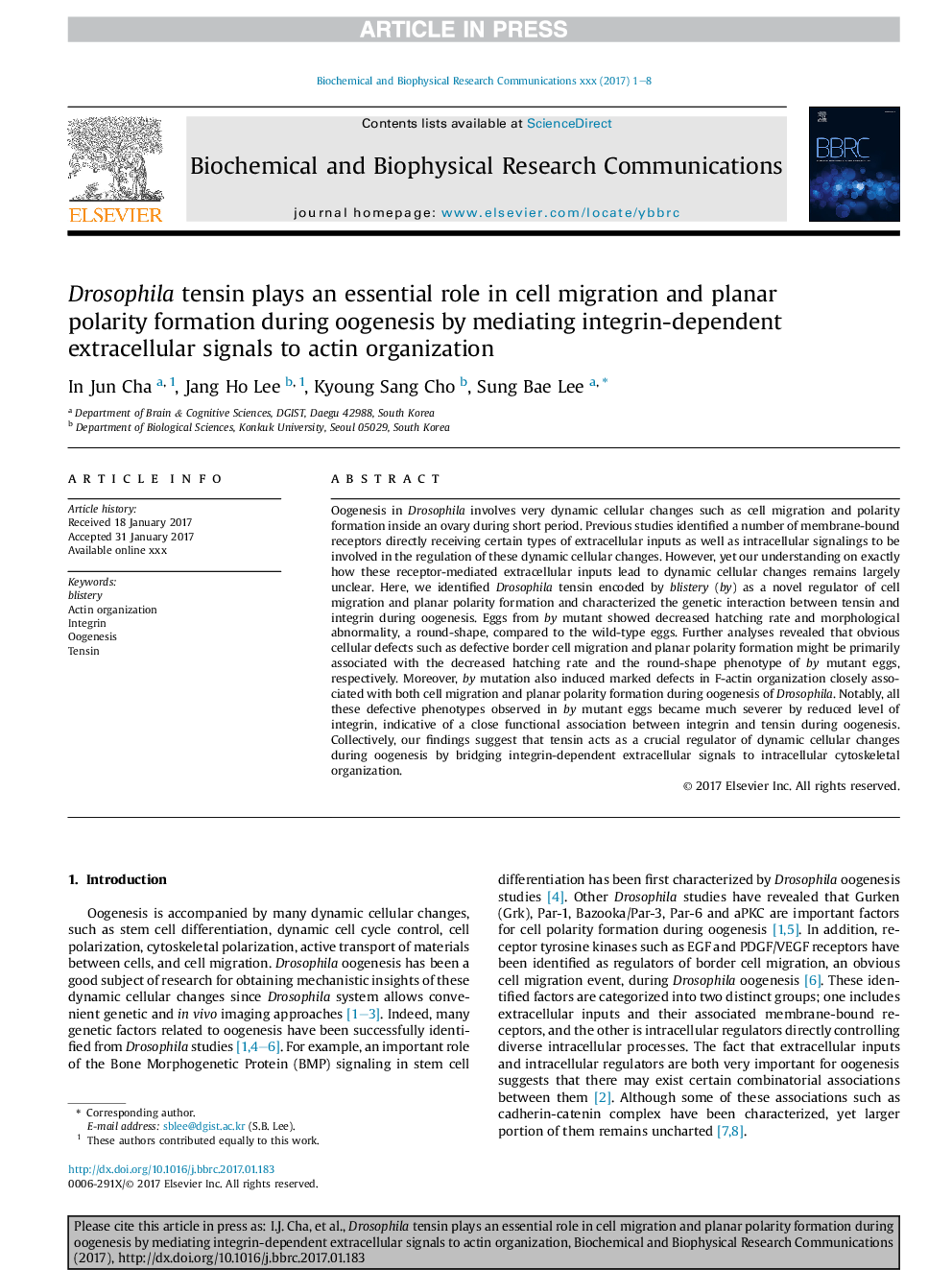| Article ID | Journal | Published Year | Pages | File Type |
|---|---|---|---|---|
| 5505451 | Biochemical and Biophysical Research Communications | 2017 | 8 Pages |
Abstract
Oogenesis in Drosophila involves very dynamic cellular changes such as cell migration and polarity formation inside an ovary during short period. Previous studies identified a number of membrane-bound receptors directly receiving certain types of extracellular inputs as well as intracellular signalings to be involved in the regulation of these dynamic cellular changes. However, yet our understanding on exactly how these receptor-mediated extracellular inputs lead to dynamic cellular changes remains largely unclear. Here, we identified Drosophila tensin encoded by blistery (by) as a novel regulator of cell migration and planar polarity formation and characterized the genetic interaction between tensin and integrin during oogenesis. Eggs from by mutant showed decreased hatching rate and morphological abnormality, a round-shape, compared to the wild-type eggs. Further analyses revealed that obvious cellular defects such as defective border cell migration and planar polarity formation might be primarily associated with the decreased hatching rate and the round-shape phenotype of by mutant eggs, respectively. Moreover, by mutation also induced marked defects in F-actin organization closely associated with both cell migration and planar polarity formation during oogenesis of Drosophila. Notably, all these defective phenotypes observed in by mutant eggs became much severer by reduced level of integrin, indicative of a close functional association between integrin and tensin during oogenesis. Collectively, our findings suggest that tensin acts as a crucial regulator of dynamic cellular changes during oogenesis by bridging integrin-dependent extracellular signals to intracellular cytoskeletal organization.
Related Topics
Life Sciences
Biochemistry, Genetics and Molecular Biology
Biochemistry
Authors
In Jun Cha, Jang Ho Lee, Kyoung Sang Cho, Sung Bae Lee,
